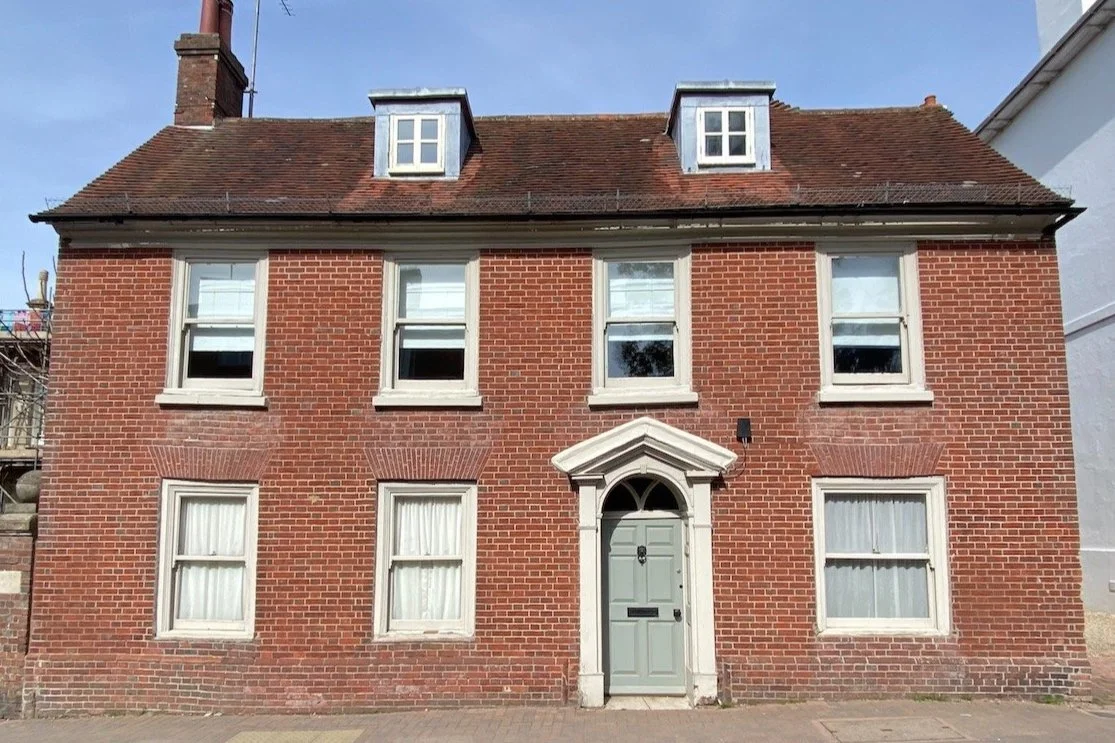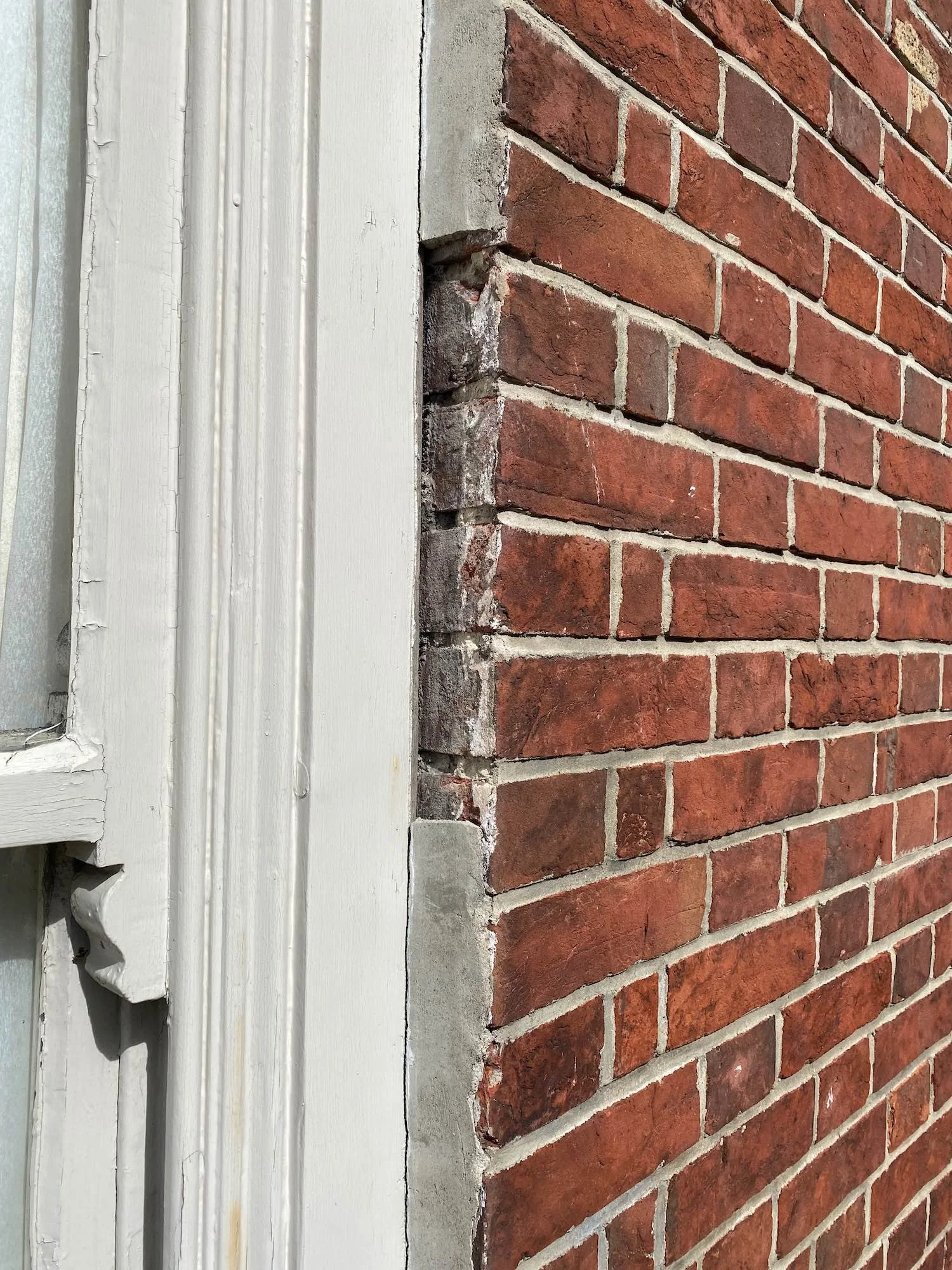Lime
Builders who work with Lime know it is a traditional building material which requires careful handling and application and is perhaps best suited to conservation work. But occasionally it’s worth reminding ourselves of some of the reasons why. Here is a simple example, an 18C house in the centre of a conservation area, which looks like it may have undergone some renovation within the last 20 years. The building fronts right onto the street, which invites reasonably close observation by the casual passer by.
Here is a close-up, and before you ask, no I did not chip off the mortar fillet, I found it like that.
The missing fillet does allow us a glimpse of the softer lime mortar behind the relatively recent repointing. Obviously there is nothing wrong with the principle of repointing but in this instance it appears the entire facade has been treated using cement mortar. That material isn’t the healthiest companion for this brickwork insofar as it will tend to create the conditions for deterioration.
Under normal weather conditions traditional brickwork undergoes a wetting-drying cycle. The brick surface absorbs rainwater and originally it would have dried out through the lime mortar of the joints, those lime mortar joints having greater porosity than the oxidised surface of the brick. Application of modern cement effectively waterproofs the joint and mars the drying part of the cycle. Which in turn means moisture will likely be held within the relatively soft brick for longer.
Typically this invites winter frost action to “blow” the face off the brick as ice crystals form under the fired clay surface and we see “spalling” of the brick face. This may tend to occur gradually over a period of years, starting in areas of the facade which see the most moisture penetration into the brickwork, for example at ground level or on exposed gables. In many cases I’ve seen, whole areas of brickwork can potentially spall leaving mortar joints standing proud of the brickwork.
This particular example does not display much at all in the way of spalling. So all we can say from a conservation perspective is that the conditions have been created for deterioration of traditional materials due to the modern application of cement mortars. For me it is a reminder that traditional building construction features some subtle qualities and it is worth trying to gain some understanding of the physics in order to give these buildings appropriate treatment.


